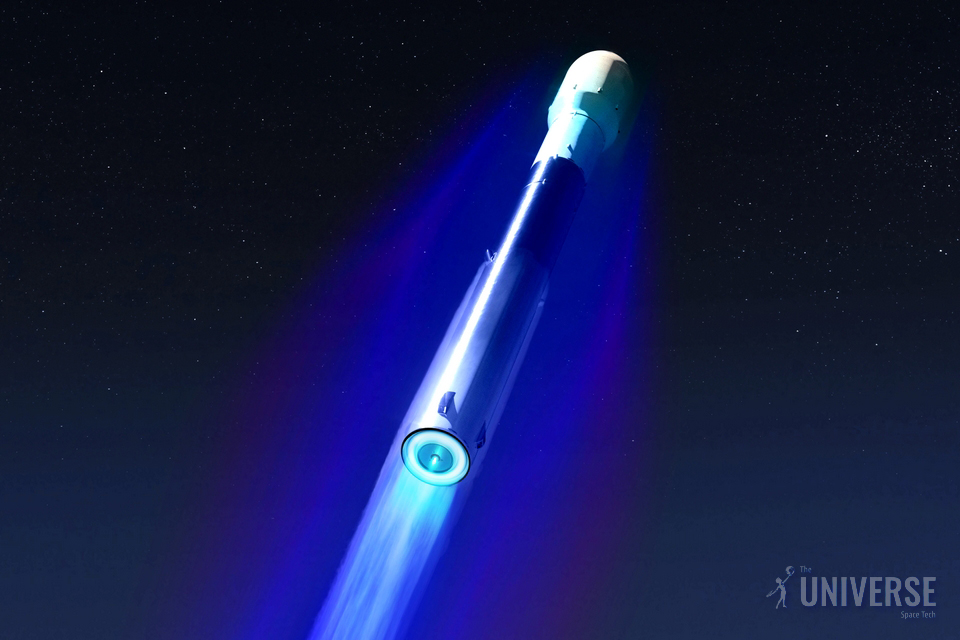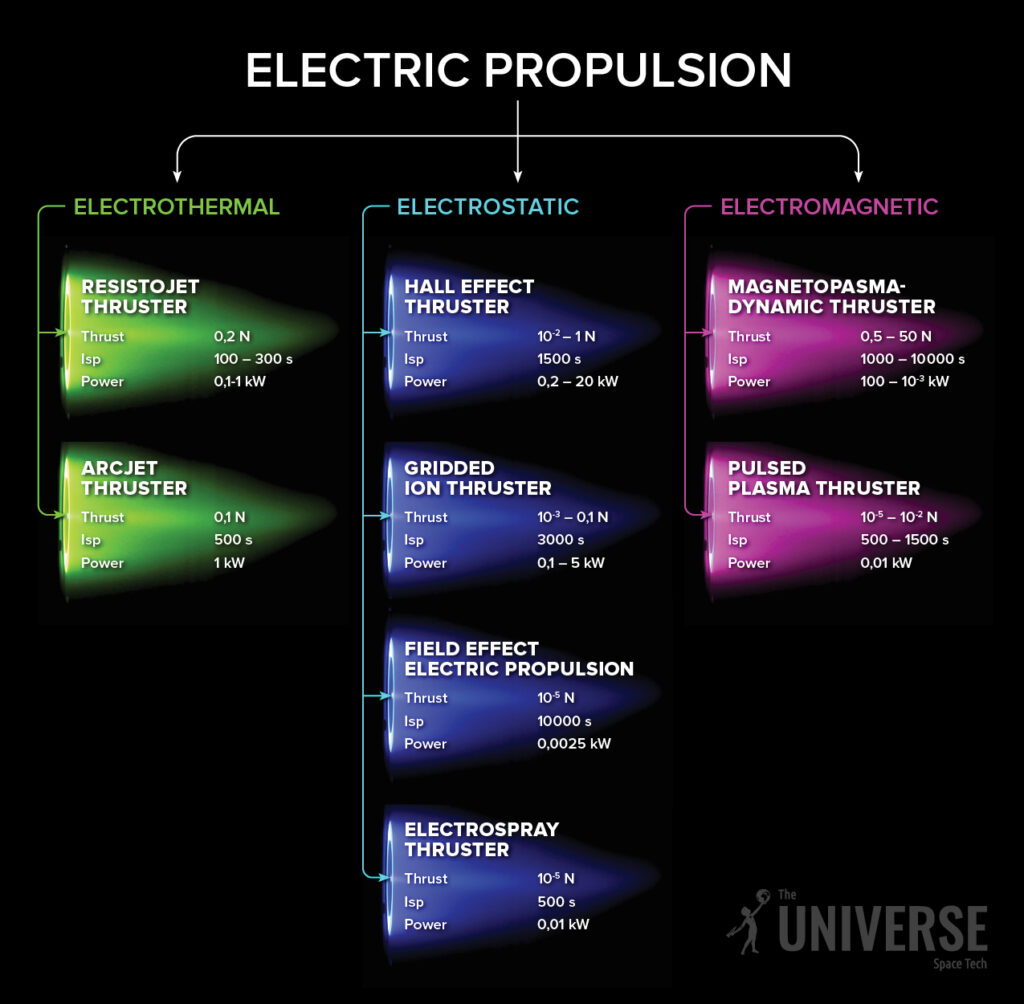Now spacecraft are accelerated mainly by means of a chemical reaction that creates a reactive impulse. However, a new generation of thrusters is already appearing — electric, ion, plasma. Here is some basic information about why they are better than the previous ones and why they have not displaced them yet.

1. Why are people not satisfied with chemical jet thrusters?
The main problem of chemical thrusters, which are now used in space technology, is their low specific impulse. A kilogram of gases coming out of their nozzle has too little speed, and it gives the spacecraft too little speed boost.
That is why fuel and oxidizer make up most of the mass of modern rockets, which limits the payload that people can take with them into space. And still, the speed that spacecraft can develop rarely exceeds 15 km/s. Therefore, even a flight to Mars lasts for several months, not to mention traveling to giant planets.
2. Are plasma, ion and electric thrusters the same thing?
It is possible to increase the specific impulse of rocket thrusters if, instead of the energy of a chemical reaction, their acceleration by a magnetic field is used. And it, in turn, can be created using electric current in conductors of various shapes. However, before that, it is necessary to turn gas molecules into charged particles.
It is on this principle that numerous concepts of electric, plasma and ion thrusters are based. There are a large number of different constructs inside each of these classes, but in fact they all work more or less the same. In all cases, electrons are detached from gas molecules, and they turn into ions. The only difference is whether this process comes to an end, that is, to the formation of plasma.
3. When did electric propulsion appear?
The idea of an electric jet engine appeared at the beginning of the XX century, and already in the 30s the first experimental samples were assembled. They confirmed that the specific impulse of an electric propulsion engine can reach 30 thousand m/s compared to 4600-5000 m/s, which can be given by a chemical thruster.
The first test of an electric jet engine in space took place in 1964, when the NASA SERT-1 spacecraft was launched. However, their mass application for satellite orbit stabilization began only in the 1980s. And as sustainer engines for interplanetary missions, they were first used on the Deep Space 1 spacecraft.
4. Where are electric propulsions used now?
Now electric jet engines are used to correct satellites in orbit almost as often as chemical ones. The most famous and most successful example here are the Starlink satellites, which use Hall effect engines powered by krypton.
In interplanetary missions, the most successful examples of the use of electric propulsion are the Dawn spacecraft, which explored Ceres and Vesta, and the Hayabusa-1 and Hayabusa-2 missions, which were able to bring soil samples from asteroids to Earth. In the future, it is planned to use a similar power plant to adjust the orbit of the lunar orbital station.
5. What are the problems with electric propulsion?
The main reason why electric propulsion has not yet displaced chemical thruster is that a high specific impulse is not equal to a large thrust. Although such propulsion systems use fuel much more economically than chemical ones, they cannot emit ions in sufficient quantities to create a really large force.

In some of them, this is due to the design. Others, such as magnetoplasma ones, could be compared with chemical ones in this indicator, but they require much more powerful energy sources than solar panels or RTGs for operation. That is why they have never been used to launch from Earth and disperse large vehicles in space.
Follow us on Twitter to get the most interesting space news in time
https://twitter.com/ust_magazine
